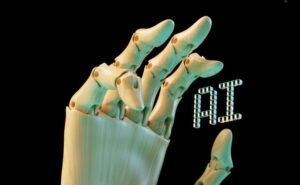Computer Science Algorithm Notes
Computer science algorithms play a crucial role in software development, artificial intelligence, data analysis, and various other disciplines. Understanding and implementing efficient algorithms is fundamental for programmers. In this article, we will explore key concepts and provide helpful notes on computer science algorithms.
Key Takeaways:
- Computer science algorithms are fundamental for software development and data analysis.
- Efficiency, correctness, and scalability are key considerations when designing algorithms.
- Data structures such as arrays, linked lists, and trees are often used in algorithm design.
- Popular algorithmic paradigms include divide and conquer, greedy algorithms, and dynamic programming.
Algorithm Analysis
Before diving into algorithm design, it’s important to analyze the efficiency and performance of different algorithms. **Algorithm analysis** allows us to compare and choose the most appropriate algorithm for a given problem. *Efficiency is typically measured in terms of time complexity and space complexity.*
Commonly Used Data Structures
When designing algorithms, programmers choose from a wide range of data structures to optimize efficiency and ensure effective execution. Some commonly used data structures include:
- Arrays
- Linked Lists
- Stacks
- Queues
- Trees
- Graphs
Each data structure has its own strengths and weaknesses, and the appropriate selection depends on the problem requirements.
Algorithmic Paradigms
**Algorithmic paradigms** offer systematic approaches to problem-solving and algorithm design. Some popular paradigms include:
- Divide and Conquer: Breaking down a problem into smaller subproblems and combining the results.
- Greedy Algorithms: Making locally optimal choices at each step to find a global optimum.
- Dynamic Programming: Breaking a problem into overlapping subproblems and solving them in a bottom-up fashion.
Using these paradigms, programmers can tackle complex problems by breaking them down into simpler steps and optimizing the solution.
Examples of Algorithms
Let’s take a look at some well-known algorithms:
1. Binary Search
Binary search is an efficient algorithm for finding a specific element in a sorted array. It repeatedly divides the array in half until the target element is found or determined to be absent.
2. Dijkstra’s Algorithm
Dijkstra’s algorithm is used to find the shortest path between nodes in a graph. It utilizes a priority queue and guarantees the shortest path if the graph has non-negative edge weights.
3. Merge Sort
Merge sort is a sorting algorithm that divides an array into smaller subarrays, sorts them, and merges them back to obtain a sorted array. It is known for its efficiency and stability.
Data Points and Analysis
| Algorithm | Best Case Time Complexity | Worst Case Time Complexity |
|---|---|---|
| Binary Search | O(1) | O(log n) |
| Dijkstra’s Algorithm | O(|E| + |V|log|V|) | O(|E| + |V|log|V|) |
| Merge Sort | O(n log n) | O(n log n) |
Conclusion
Computer science algorithms form the backbone of various fields and technologies. Understanding algorithmic concepts, data structures, and analysis techniques allows programmers to develop efficient and scalable solutions. By leveraging different algorithmic paradigms, developers can tackle complex problems effectively. Continued exploration and application of algorithms will contribute to advancements in the field of computer science.

Common Misconceptions
Paragraph 1
One common misconception people have about computer science algorithms is that they are only used by programmers. In reality, algorithms are utilized in various industries and fields outside of computer science. They are employed in finance, medicine, engineering, and even in everyday applications such as recommendation systems in online shopping platforms.
- Algorithms are not limited to computer science.
- They play a crucial role in finance and medicine.
- They are used in recommendation systems for online shopping.
Paragraph 2
Another misconception is that algorithms are only applicable in complex problem-solving scenarios. While algorithms certainly play a crucial role in solving complex problems, they are also used for simpler tasks. For instance, sorting algorithms are commonly used to organize data in ascending or descending order, which can be used in simple tasks like arranging a list of items alphabetically.
- Algorithms are not limited to complex problems only.
- Sorting algorithms can be used for simpler tasks like organizing data.
- They help in arranging lists of items in a specific order.
Paragraph 3
Many people believe that algorithms always produce the correct output. However, algorithms can be flawed and may not always produce the desired result. Certain algorithms can be sensitive to input, and if the input is not properly formatted or within a certain range, the output may not be accurate. It is important for programmers to account for edge cases and handle exceptions to ensure the algorithm’s correct functioning.
- Algorithms can have flaws and may not always produce accurate results.
- Input quality can affect the accuracy of the algorithm’s output.
- Programmers need to consider edge cases and handle exceptions to ensure correctness.
Paragraph 4
Some people mistakenly believe that algorithms are synonymous with coding. While coding is a crucial part of implementing algorithms, they are not the same thing. Algorithms refer to a logical sequence of steps to solve a problem, whereas coding is the implementation of those steps using a programming language. Algorithms can be expressed using pseudocode or flowcharts before they are converted into code.
- Algorithms and coding are not synonymous.
- Algorithms involve the logical sequence of steps to solve a problem.
- Coding is the implementation of those steps in a programming language.
Paragraph 5
Lastly, there is a misconception that algorithms are only used by advanced computer scientists. In reality, algorithms are employed by programmers at various skill levels. Basic algorithms, such as linear search or binary search, are often learned by beginners and form the building blocks of more complex algorithms. Understanding and applying algorithms are essential skills for anyone working in the field of computer science, regardless of their experience level.
- Algorithms are used by programmers at different skill levels.
- Basic algorithms are often learned by beginners in computer science.
- Understanding algorithms is essential for anyone working in the field of computer science.

Key Concepts
Before diving into the fascinating world of computer science algorithms, let’s explore some key concepts that form the foundation of this field. Understanding these concepts is crucial for comprehending the intricacies and applications of algorithms.
Table: Types of Algorithms
Algorithms can be classified into various categories based on their functionalities and applications. The table below presents a glimpse of different types of algorithms and their respective characteristics.
| Algorithm Type | Description | Example |
|---|---|---|
| Sorting Algorithms | Organize data in a specific order | Quicksort |
| Searching Algorithms | Find the position of an element in a collection | Binary search |
| Graph Algorithms | Analyze relationships between nodes in a graph | Dijkstra’s algorithm |
| Dynamic Programming Algorithms | Solve complex problems by breaking them into simpler subproblems | Fibonacci sequence generation |
Table: Algorithm Efficiency Comparison
Efficiency plays a crucial role in algorithm design, as it impacts the speed and resources required for execution. The table below offers a comparative analysis of three popular sorting algorithms.
| Algorithm | Time Complexity | Space Complexity |
|---|---|---|
| Bubble Sort | O(n^2) | O(1) |
| Insertion Sort | O(n^2) | O(1) |
| Merge Sort | O(n log n) | O(n) |
Table: Common Data Structures
Data structures provide a way to organize and store data efficiently. The table below showcases some widely used data structures, along with their characteristics and typical use cases.
| Data Structure | Features | Use Cases |
|---|---|---|
| Arrays | Fixed size, random access | Data storage, efficient indexing |
| Linked Lists | Dynamic size, sequential access | Implementation of stacks, queues |
| Trees | Hierarchical organization | Binary search, decision-making |
| Hash Tables | Key-value mapping | Efficient searching, caching |
Table: Time Complexity Notations
Time complexity analysis helps us understand the performance characteristics of algorithms. The table below presents commonly used notations to describe time complexity.
| Notation | Description |
|---|---|
| O(1) | Constant time complexity |
| O(log n) | Logarithmic time complexity |
| O(n) | Linear time complexity |
| O(n^2) | Quadratic time complexity |
Table: Notable Algorithms in Computer Science
Throughout the years, computer scientists have developed remarkable algorithms that have revolutionized various domains. The following table highlights some well-known algorithms and their significant contributions.
| Algorithm | Domain | Contributions |
|---|---|---|
| PageRank | Web Search | Improved relevance ranking |
| QuickSort | Sorting | Efficient sorting technique |
| Dijkstra’s Algorithm | Graph Theory | Shortest path calculation |
| Apriori Algorithm | Data Mining | Frequent itemset mining |
Table: Algorithm Complexity Comparison
Comparing the complexities of various algorithms aids in selecting the most appropriate one for a given problem. In the table below, we explore the complexity differences between three common searching algorithms.
| Algorithm | Best Case Complexity | Average Case Complexity | Worst Case Complexity |
|---|---|---|---|
| Linear Search | O(1) | O(n) | O(n) |
| Binary Search | O(1) | O(log n) | O(log n) |
| Hashing | O(1) | O(1) | O(n) |
Table: Sorting Algorithms Comparison
Sorting algorithms vary in terms of efficiency, stability, and other factors. Let’s compare and contrast four popular sorting techniques in the following table.
| Algorithm | Time Complexity | Stability |
|---|---|---|
| Bubble Sort | O(n^2) | Stable |
| Selection Sort | O(n^2) | Unstable |
| Insertion Sort | O(n^2) | Stable |
| QuickSort | O(n log n) | Unstable |
Table: Frequently Used Algorithms
Certain algorithms find widespread usage in numerous applications. The table below highlights four widely employed algorithms and their respective areas of application.
| Algorithm | Application |
|---|---|
| A* Search Algorithm | Pathfinding in games, navigation systems |
| Knapsack Problem | Resource allocation, optimization |
| Randomized Algorithms | Cryptography, simulations |
| Compression Algorithms | Data storage, transmission efficiency |
Conclusion
Computer science algorithms serve as the building blocks of modern technology, enabling efficient problem-solving and optimization. From sorting and searching to graph theory and data mining, these algorithms transcend various domains, revolutionizing the way we process information. Understanding their complexities, characteristics, and applications helps in making informed decisions while designing and implementing computational solutions.
Frequently Asked Questions
Q: What is an algorithm in computer science?
An algorithm is a step-by-step procedure or a set of rules to solve a specific problem. In computer science, algorithms are used to perform various tasks efficiently and accurately.
Q: What are some common types of algorithms?
Some common types of algorithms include sorting algorithms (such as bubble sort and merge sort), searching algorithms (such as linear search and binary search), graph algorithms (such as Dijkstra’s algorithm and breadth-first search), and many more.
Q: How do algorithms help in computer science?
Algorithms play a crucial role in computer science as they provide solutions to complex problems, improve efficiency by optimizing resource usage, and enable the development of various applications and software systems.
Q: What are the characteristics of a good algorithm?
A good algorithm should have the following characteristics: correctness, efficiency, adaptability, simplicity, and maintainability. These characteristics ensure that the algorithm produces the correct output, performs optimally, can be easily modified, and is easy to understand and maintain.
Q: How are algorithms analyzed?
Algorithms are analyzed based on their time complexity and space complexity. Time complexity measures the amount of time an algorithm takes to run, while space complexity measures the amount of memory space required by an algorithm.
Q: What is recursion in algorithms?
Recursion is a technique in which a function calls itself in its own definition. It is commonly used in algorithms where a task can be broken down into simpler sub-tasks of the same type.
Q: What is the difference between iterative and recursive algorithms?
Iterative algorithms use loops or repetition structures to repeat a set of instructions until a certain condition is met, while recursive algorithms use function calls to invoke the same operation on smaller input until a base case is reached.
Q: Can algorithms be visualized?
Yes, algorithms can be visualized using various tools and techniques. Flowcharts, pseudocode, and animation are commonly used methods to represent and visualize algorithms.
Q: What is the significance of algorithm efficiency?
Algorithm efficiency is vital in computer science as it determines how well an algorithm performs in terms of time and space usage. Efficient algorithms result in faster and more resource-friendly solutions.
Q: Are there any famous algorithms in computer science?
Yes, there are several famous algorithms in computer science, such as the Dijkstra’s algorithm for finding the shortest path, the quicksort algorithm for sorting, the breadth-first search algorithm for traversing graphs, and the RSA algorithm for encryption.




